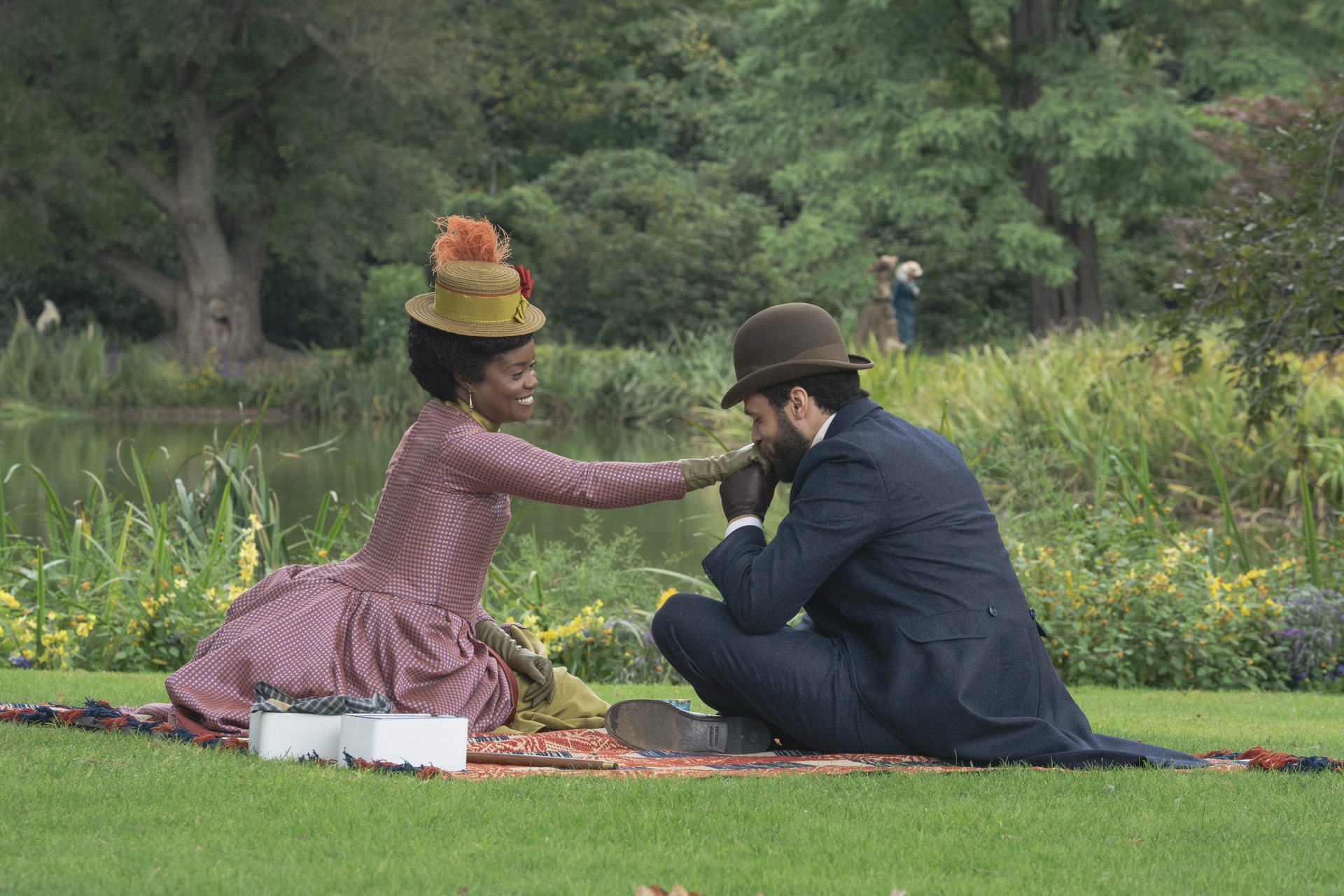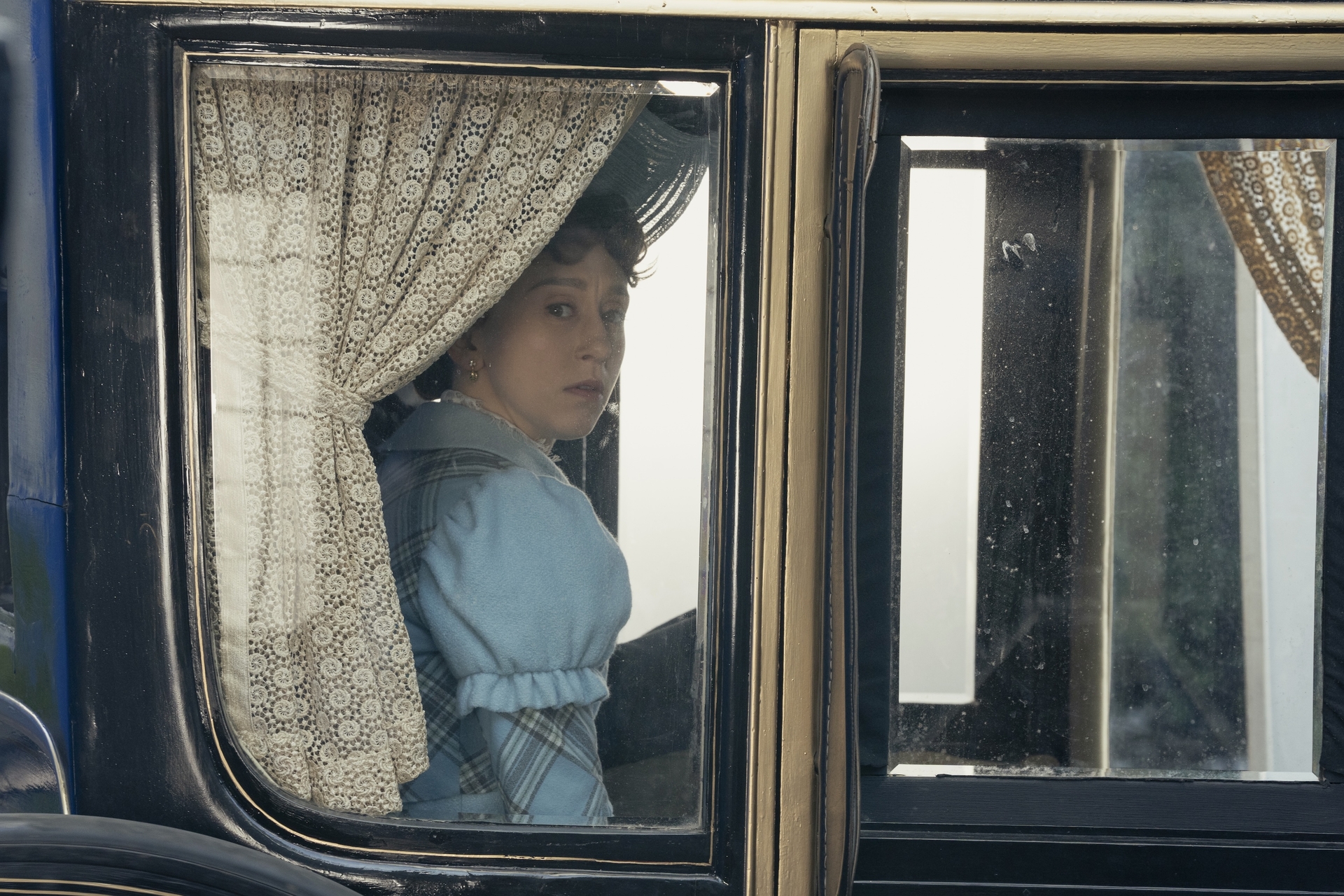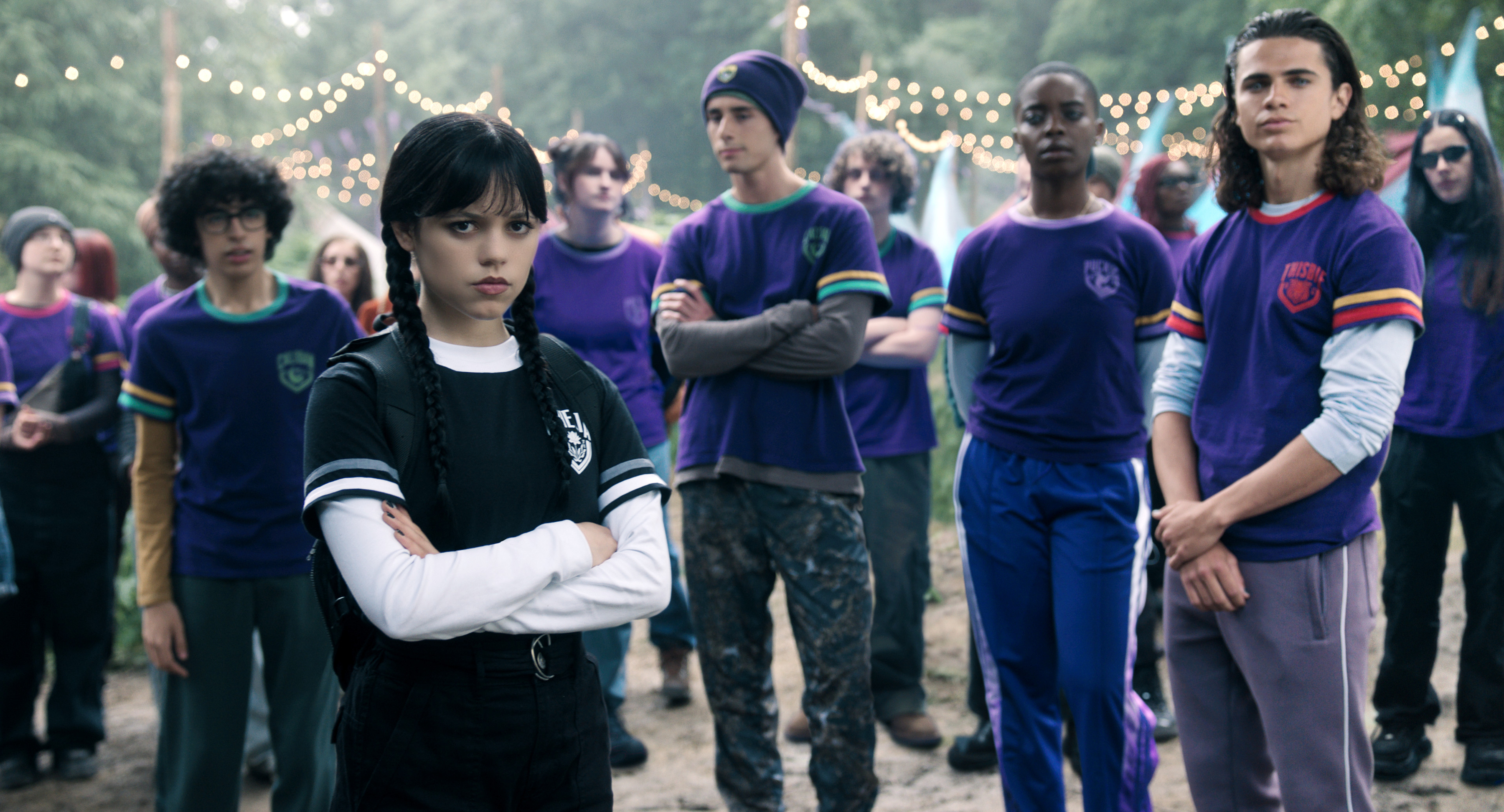It’s not just Newport society balls that need to be perfectly on theme and planned to a T. The de rigeur grandeur and opulence of “The Gilded Age” is the result of months of planning, very careful maneuvering, and miles of fake marbling. But the visual language of the show has ever so slowly expanded over the HBO series’s three seasons to be larger and more dynamic. The trick to making “The Gilded Age” even more transporting, according to cinematographer Manuel Billeter, has been to enhance our perspective both outwards and inwards.
Billeter has been behind the camera on “The Gilded Age” since Season 1, and started out by using lens choices to follow the show’s demarcation between the “Old Money” Van Rhijns and the “New Money” Russells. Scenes where the former powered the story — usually, let’s be real, Christine Baranski’s Agnes — were shot on anamorphic lenses, which tend to have a nostalgic, old-school film feel. Meanwhile, moments wherein Carrie Coon’s Bertha presided over New York society were shot on spherical lenses, which tend to be sharper, crisper, and more modern.
In Season 3, “The Gilded Age” still has its two different lens sets, but the show’s upgraded to an ALEXA Mini Large Format, in order to do the opulence of Bob Shaw’s production design and Kasia Walicka Maimone’s costumes more justice. The show’s camera language has slowly opened up to be more dynamic, more open to movement, more open to the change in society that Season 3 heralds.
One only has to look at the jittering chaos that opens Episode 10, as a carriage rushes George Russell (Morgan Spector) back home after he’s been shot. But the opening of Episode 9 is just as energized, in its way, following Ward McAllister’s (Nathan Lane) society tell-all as the book passes from house to house. In Season 3, the camera flies through space at the same speed as gossip, or with the same force as the passions of the show’s characters. It even, in a particularly “Gilded Age” way, chases modernity by going electric.
“For the Russell scene at the ball, what I really enjoyed using for the first time is the electronic bulbs. We had them in Season 1 with the big scene of the lighting of the New York Times Building, the introduction of electricity, [but] now for this event, we wanted to bring it back and illuminate one of the ballrooms and really make a spectacle out of electricity. That was quite fun to do,” Billeter told IndieWire.
“The Gilded Age” has spectacle down to a science, at this point. Visually, Billeter said that the secret is letting a lot of the more sumptuous moments play out on wider lenses, giving compositions space and time to be fully absorbed by the audience. “The wide lens really tends to tell the story of opulence and of grandeur much, much better than tighter lenses,” Billeter said. “You have all these wide shots and these overhead shots and a lot of sweeping, beautiful visuals.”

Billeter and his camera team also obey the old Fred Astaire adage that either the performer has to dance or the camera has to. For the Season 3 finale, it’s those sweeping, beautiful camera moves that unite the two different balls across the color line, folding happiness for Peggy (Denée Benton) and Dr. Kirkland (Jordan Donica) into the tepid fresh start for Marion (Louisa Jacobson) and Larry (Harry Richardson) into a new heartbreak for Bertha.
“Obviously, the choreography of the dancers needed to go together with the choreography of the camera,” Billeter said. “With both the Newport balls, we weave them together and use the camera to move seamlessly from one ballroom into the next. We prepped that extensively to find a way to musically and thematically switch between them, like a dance.”
But the bravura camera movements and visual excess would be meaningless, Billeter said, if it’s not modulated with more straightforward camerawork that gets at character interiority. “I really like making each scene as subjective as possible. And I think it can be done with very simple means, but you can really get into the truth of [the story,]” Billeter said.
If you want to clock when “The Gilded Age” Season 3 goes for its gut punches, pay attention to when the camera gets close to its characters. When all of the ornamentation falls away, especially now that the show’s in its third season, Billeter thinks that the camera and the composition of the frame can really get at the emotional storylines.

“Some of my favorite shots that I did this season were actually the closeups of Taissa Farmiga — when they’re in the carriage outside of the church, and those closeups, that emotional landscape in that space really beats any ornamental or colorful decor. Obviously you need both, they complement each other, but that’s really where I felt like, ‘Oh my God, I think this is my favorite shot of the show so far,” Billeter said.
Chasing subjectivity and emotional expression has allowed Billeter and his fellow director of photography Christopher LaVasseur to take the show into darker, more varied color territories, even as it explores everywhere from merry old England to the Western Frontier.
“The atmosphere that we find in spaces, the lighting, affects us deeply when we move through those spaces. And so I always look at a scene for what is the scene about? What are the emotional beats in the scene? How can I create an environment that does it justice?” Billeter said.
“The Gilded Age” Season 3 is streaming on HBO Max.



